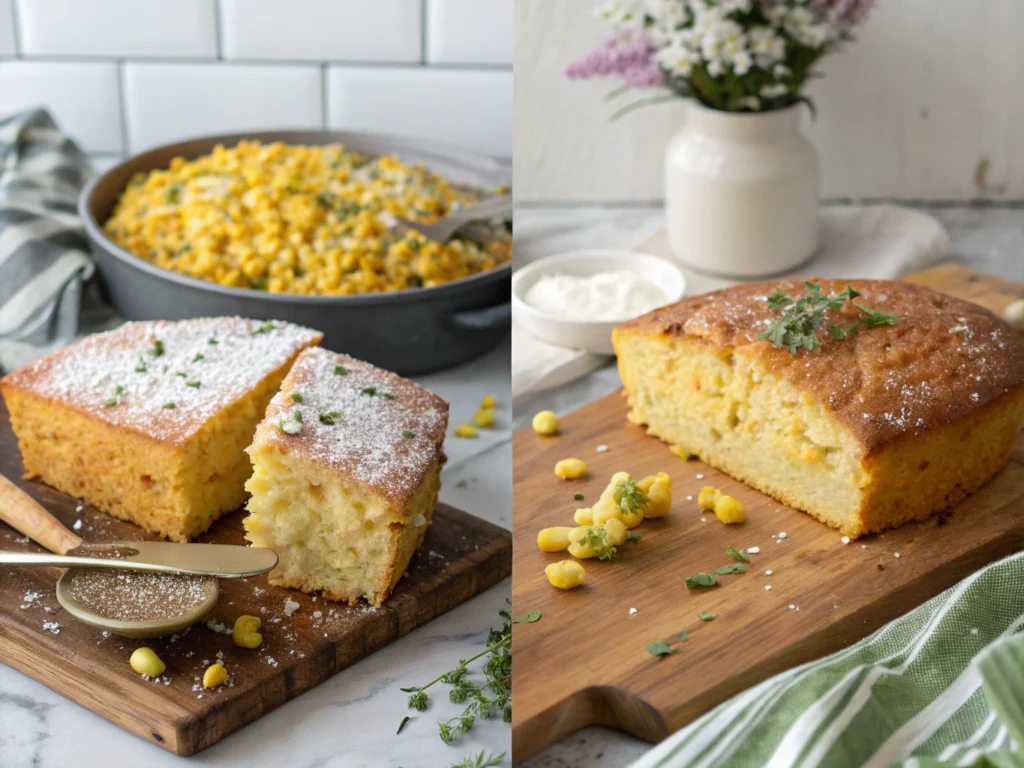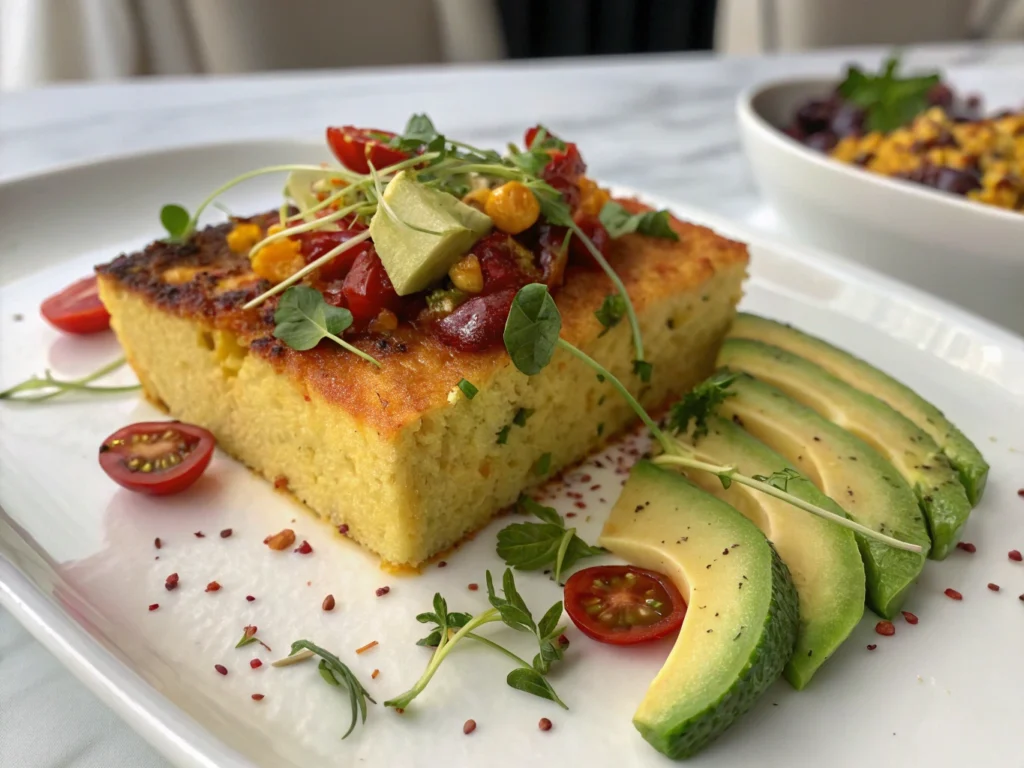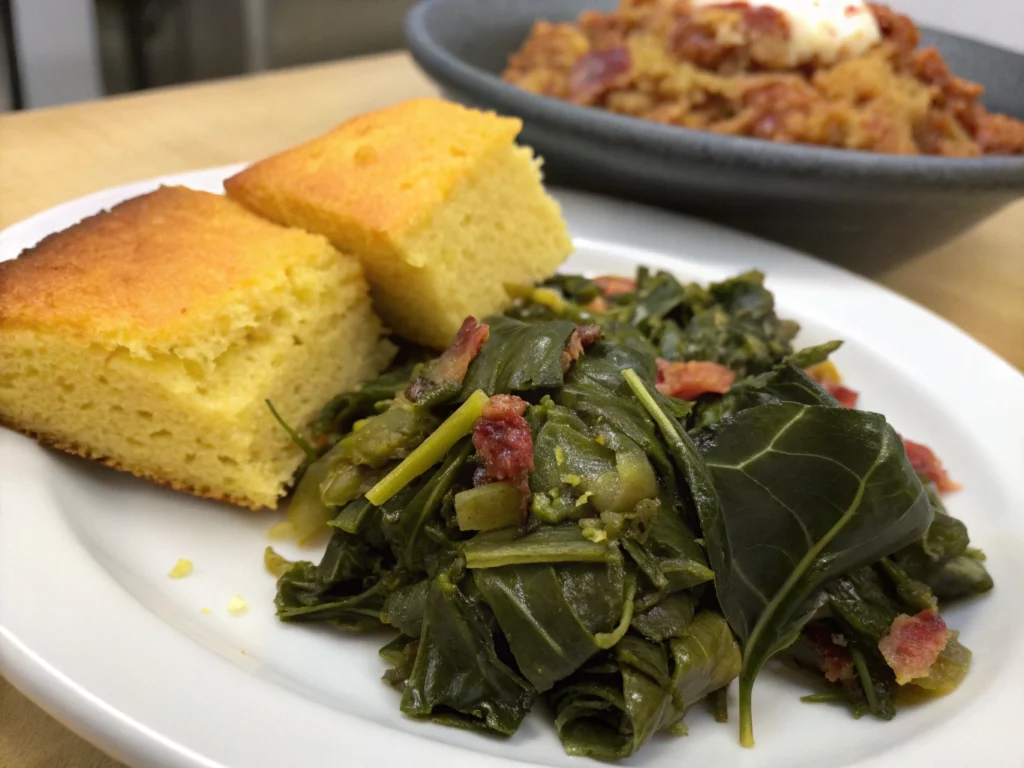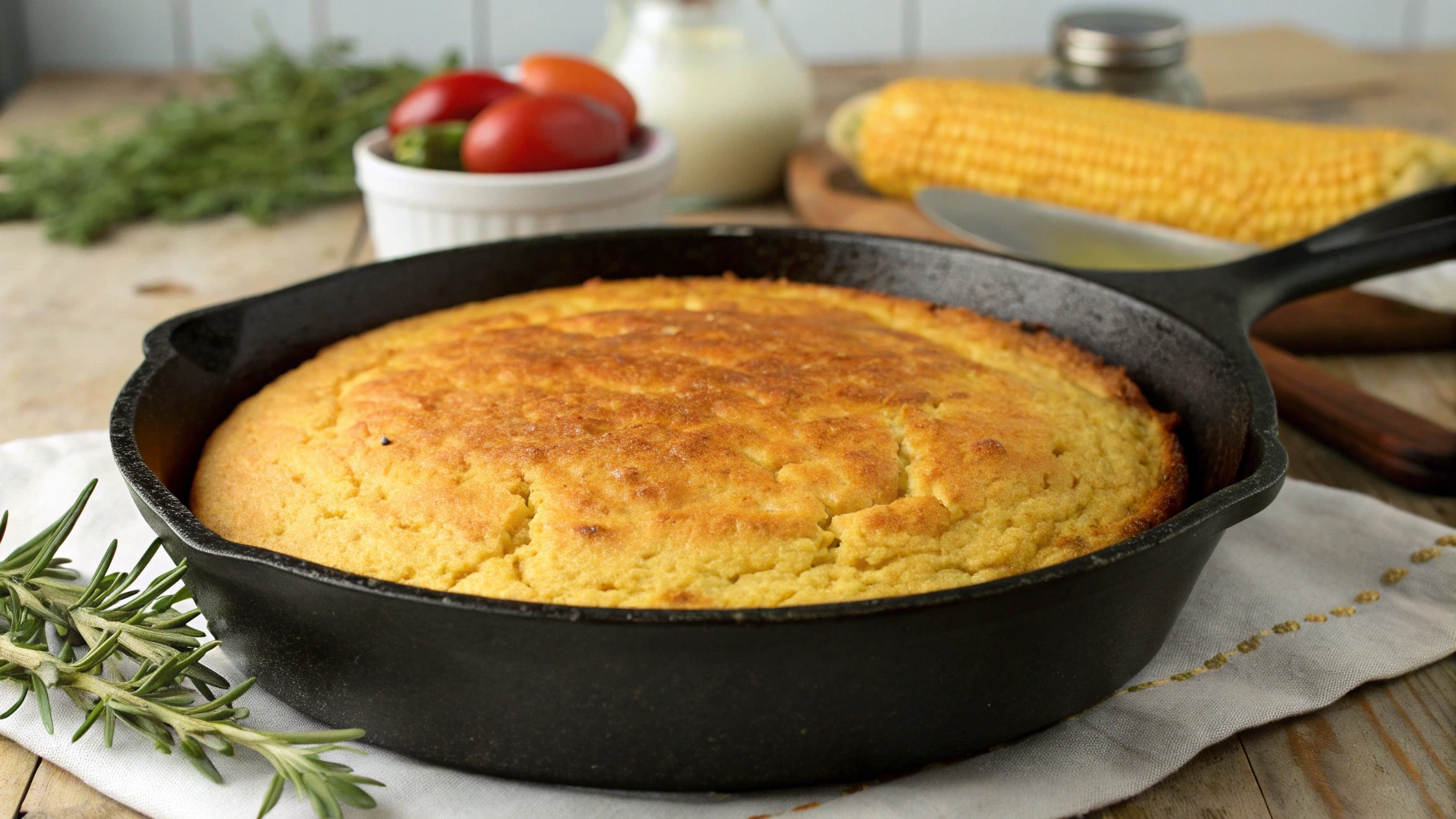Cornbread is more than just a dish in the South; it’s a cultural icon that holds deep roots in history and tradition. While it’s a beloved staple across the United States, one question often sparks heated debates: “Why do Southerners not put sugar in cornbread?” This savory preference isn’t just about taste—it’s steeped in history, regional pride, and culinary science. From its origins as a necessity in early Southern kitchens to its role as a cultural symbol today, cornbread tells a fascinating story.
The Historical Roots of Southern Cornbread
Why Do Southerners Not Put Sugar in Cornbread? A Historical Perspective
Southern cornbread traces its beginnings back to the Indigenous peoples who first cultivated cornmeal from maize. When settlers arrived in the South, they adopted and adapted this staple to suit their needs. Unlike wheat, which struggled to thrive in the Southern climate, corn was hardy, plentiful, and easy to mill into meal.
The type of corn used also shaped the flavor. Southern cooks relied on dent corn, a variety with a naturally savory profile, unlike the sweeter corn varieties grown elsewhere. As a result, early cornbread was inherently savory—no sugar required.
How Scarcity of Sugar Defined Southern Cooking
In the 18th and 19th centuries, sugar was a luxury in the South, reserved for special occasions or sweet treats like pies and cakes. Everyday dishes like cornbread needed to be practical and affordable. Adding sugar to something so basic wasn’t just unnecessary—it was impractical.
Instead of sweetening cornbread, Southerners focused on maximizing its utility. Paired with greens, beans, or buttermilk, this savory bread became a versatile staple that could feed a family on a modest budget. Its simplicity became its hallmark, and that tradition endures today.
Cultural Significance of Cornbread in the South
Why Savory Cornbread Is a Southern Icon
Cornbread is more than food in the South—it’s a cultural touchstone that speaks to the region’s history, resilience, and sense of community. From Sunday dinners to family reunions, cornbread is a constant presence on Southern tables. Its simplicity makes it accessible, while its versatility allows it to complement an array of dishes, from collard greens to fried chicken.
The preference for savory cornbread reflects the South’s culinary values, which lean toward bold, natural flavors. For many, the question “Why do Southerners not put sugar in cornbread?” is easily answered: sweet cornbread simply doesn’t align with the South’s deeply rooted food traditions. Adding sugar, they argue, makes it a cake—not cornbread.
How Generations Have Preserved the No-Sugar Tradition
Cornbread recipes are often passed down through generations, preserving not just ingredients but also memories of family meals and shared moments. For many Southern families, the way cornbread is prepared is a source of pride. It connects them to their ancestors, who relied on this humble dish to sustain them through tough times.
Interestingly, regional variations exist within the South itself. Some areas add buttermilk for tanginess, while others prefer plain milk or even water. What remains consistent is the absence of sugar—a choice that underscores the South’s preference for authenticity and practicality.
Despite the rise of sweet cornbread in some modern kitchens, many Southerners hold fast to their savory roots. For them, cornbread isn’t just a side dish; it’s a statement of identity.
Sweet Cornbread vs. Savory Cornbread: A Culinary Debate

Why Do Southerners Not Put Sugar in Cornbread? Regional Divides
The debate between sweet and savory cornbread is as old as the hills, with passionate opinions on both sides. Southern-style cornbread is typically made with cornmeal, a small amount of flour, buttermilk, eggs, and a leavening agent. It’s baked in a hot, greased cast-iron skillet, which gives it a signature crispy crust.
Northern cornbread, in contrast, often includes more flour, sugar, and sometimes even honey or molasses. This makes it sweeter, lighter, and more cake-like. For Southerners, though, these sweeter versions stray too far from the original purpose of cornbread—to be a savory, complementary bread.
Key Differences Between Northern and Southern Cornbread
The differences between Northern and Southern cornbread are more than culinary; they’re cultural. Southerners often associate sweet cornbread with Northern preferences, viewing it as less authentic. This divide highlights the enduring question, “Why do Southerners not put sugar in cornbread?” For many, the answer lies in tradition, practicality, and taste.
In Southern kitchens, cornbread is designed to balance hearty, savory dishes like stews and beans. Adding sugar, they argue, disrupts that balance. In the North, however, sweeter cornbread pairs well with rich, buttery spreads or as a standalone treat. This regional divide underscores how food reflects local tastes and traditions.
The Science Behind the Flavors
The Natural Sweetness of Cornmeal Explains Why Sugar Isn’t Needed
The natural flavor of cornmeal is one of the key reasons why Southerners not put sugar in cornbread. Cornmeal, particularly from dent corn, has a subtle, earthy sweetness. This flavor becomes more pronounced during baking, creating a perfectly balanced bread without the need for added sugar. Southerners have long appreciated this quality, preferring the natural taste of the corn itself to artificial sweetness.
In fact, sugar can mask the cornmeal’s delicate flavor. This is why many Southern cooks skip sugar altogether—it allows the true essence of cornbread to shine.
How Southern Dishes Pair Best with Savory Cornbread
Another reason Southern cornbread is traditionally savory lies in its role at the dinner table. Often served with rich, savory dishes like collard greens or beans, cornbread’s subtle taste complements these flavors rather than competing with them. Adding sugar would make the bread too sweet for these pairings.
The science of taste also supports this preference. Sugar dulls the palate, whereas a more neutral flavor like unsweetened cornbread enhances the overall meal. This functional approach to food reflects the South’s practical and resourceful cooking style.
Modern Takes on Cornbread

Why Modern Chefs Still Respect the No-Sugar Tradition
In recent years, Southern cornbread has seen a revival in kitchens around the world, with chefs and home cooks alike putting their own spins on the traditional recipe. While the core ingredients—cornmeal, buttermilk, and eggs—remain unchanged, modern variations often introduce new flavors and techniques. For instance, gluten-free cornbread made with almond or coconut flour has gained popularity among those with dietary restrictions. Plant-based eaters are swapping buttermilk for almond or oat milk, sometimes adding apple cider vinegar for that signature tang.
Interestingly, some cooks are experimenting with adding ingredients like jalapeños, cheddar cheese, or even crumbled bacon, creating a savory cornbread that feels fresh but remains true to its roots. These adaptations highlight how cornbread can evolve while still preserving the essence of its Southern origins.
For those who prefer a slightly sweeter touch, honey or maple syrup is sometimes added, but in moderation. This allows for a balanced flavor without overpowering the natural sweetness of the cornmeal. Still, traditionalists might argue that these tweaks stray too far from the heart of the dish, reviving the debate over “Why do Southerners not put sugar in cornbread?”
How Cornbread Is Finding Its Place in Fusion Cuisine
Cornbread has also found its way into fusion cuisine, where it’s combined with global flavors to create unique dishes. For example, chefs are incorporating cornbread crumbs into stuffing for holiday meals or using it as a crust for savory pies. In some cases, cornbread is paired with bold ingredients like kimchi or curry to create a harmonious blend of flavors.
Fusion recipes often aim to introduce cornbread to a broader audience while maintaining its signature texture and taste. This approach reflects how food can act as a bridge between cultures, blending the old with the new. While these innovative uses may not answer the question, “Why do Southerners not put sugar in cornbread?”, they underscore the dish’s versatility and timeless appeal.
For those interested in a traditional recipe, try this Southern cornbread with beef tallow to experience the authentic taste of the South.
FAQs About Sugar in Cornbread
Is Sweet Cornbread Ever Acceptable in the South?
While sweet cornbread is more common in Northern recipes, there are some occasions where a slightly sweetened version might appear on Southern tables. These exceptions often come down to personal preference or specific pairings. For example, cornbread served with spicy chili might benefit from a hint of sweetness to balance the heat. Even so, traditionalists often view sweet cornbread as “Northern-style,” preserving the age-old divide.
For Southerners, the question “Why do Southerners not put sugar in cornbread?” isn’t just about flavor. It’s about honoring a long-standing tradition. Sweetness is usually reserved for desserts, leaving cornbread as a savory staple. This distinction is part of what makes Southern cuisine unique and deeply rooted in history.
What Do Southerners Serve with Cornbread?

Cornbread’s versatility makes it a natural side dish for a variety of Southern meals. It’s commonly paired with hearty dishes like collard greens, black-eyed peas, and beans. The subtle flavor of unsweetened cornbread allows it to complement these dishes without competing with their rich, savory profiles.
During holiday gatherings, cornbread often finds its way into classic recipes like cornbread stuffing or dressing, especially in Southern-style Thanksgiving dinners. Some families even crumble leftover cornbread into a glass of buttermilk for a nostalgic, no-waste treat.
If you’re looking for a pairing idea, consider exploring this recipe for collard greens and dirty rice for a true Southern feast.
Can Southern Cornbread Include Sweeteners Like Syrup?
Occasionally, Southern cooks may use natural sweeteners like sorghum syrup or molasses to enhance cornbread. These sweeteners, often tied to regional farming traditions, add a subtle complexity to the bread. However, even these additions are sparingly used, ensuring that the cornbread remains savory at heart.
For many, though, the answer to “Why do Southerners not put sugar in cornbread?” comes down to philosophy. Sugar, they believe, transforms cornbread into something entirely different—more cake than bread. This distinction helps maintain the dish’s integrity and purpose in Southern cuisine.
Conclusion
Southern cornbread is more than a recipe; it’s a reflection of history, culture, and taste. Rooted in practicality and tradition, it stands as a savory counterpart to the sweet cornbreads often found in other regions. The question “Why do Southerners not put sugar in cornbread?” is answered by understanding the South’s preference for natural flavors, the historical scarcity of sugar, and the desire to maintain authenticity.
While modern twists on cornbread introduce sweeteners and innovative ingredients, the essence of Southern cornbread—a simple, savory bread made from cornmeal—remains unchanged. Whether served with collard greens, stews, or as part of a fusion dish, this beloved staple continues to connect Southerners to their roots.
For readers inspired to explore more Southern cooking, check out this recipe on Southern cornbread with beef tallow for an authentic take. Embrace the tradition and savor the flavors of the South!

